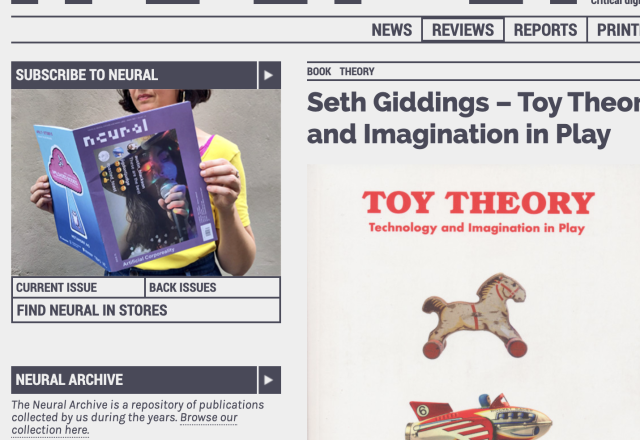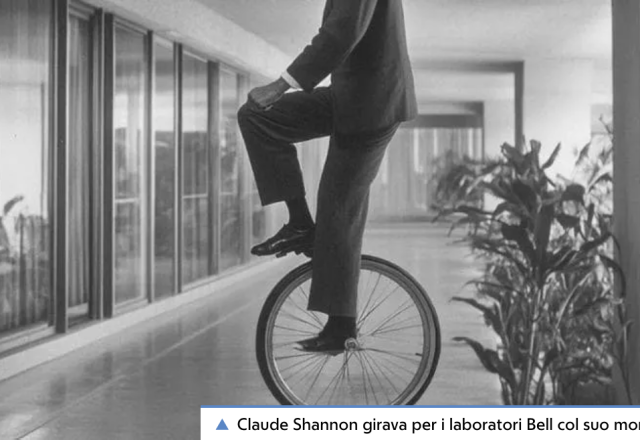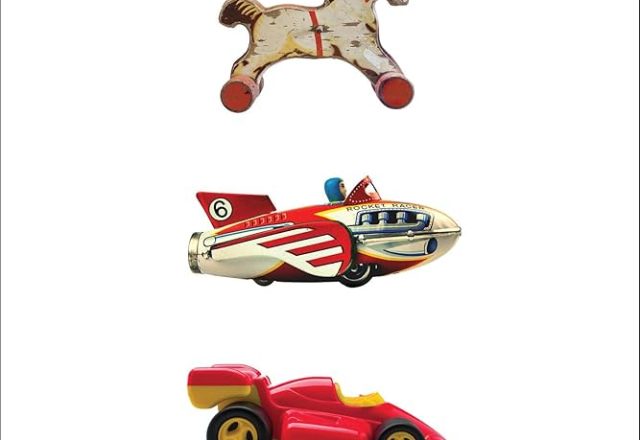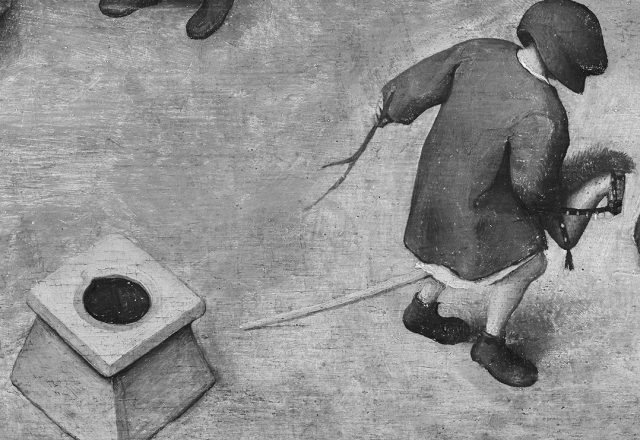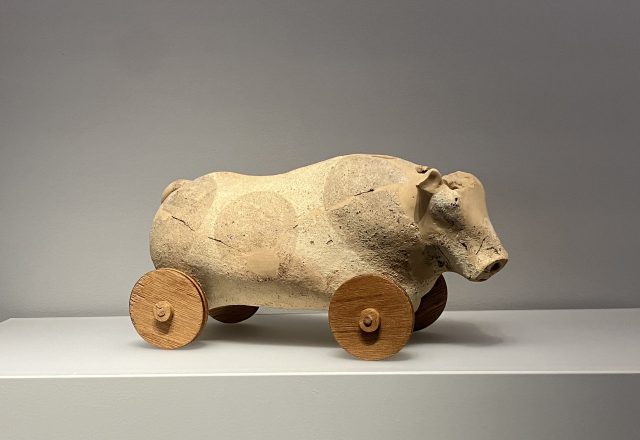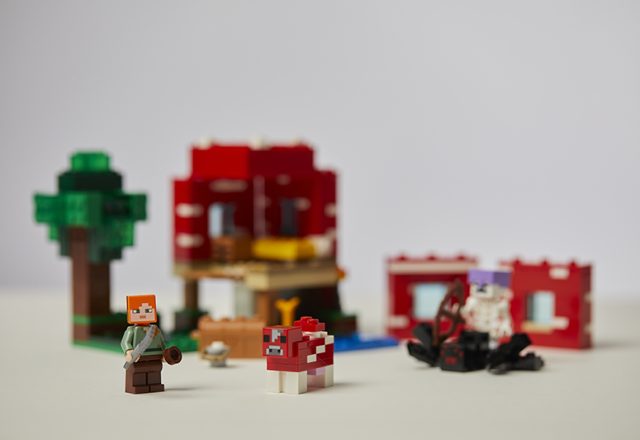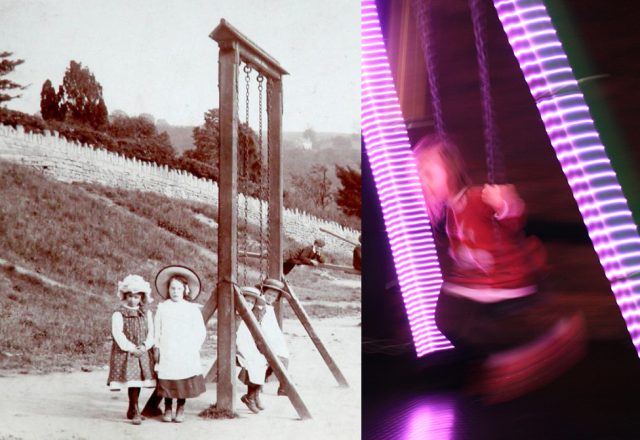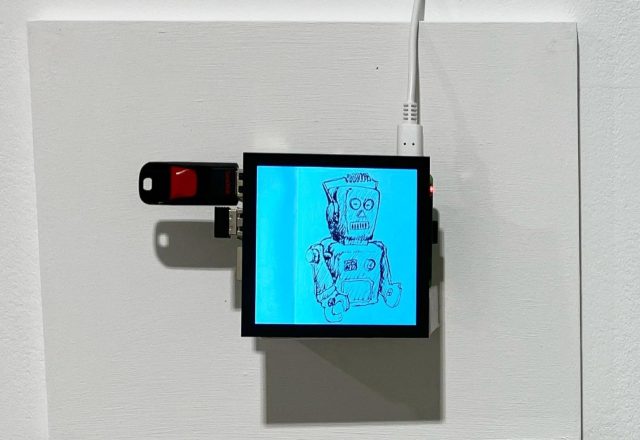Short but sweet review in neural magazine
Category: toy theory
best inventions
The best inventions are child’s play. Literally. (An article in the Italian newspaper La Repubblica by Giuliano Aluffi, featuring my Toy Theory research. Rough…
cover
Out in paperback and open access 5th November 2024
a toy theory of knowledge and belief
excerpt from draft of Toy Theory: technology and imagination in play (out 5th November): The toy […] offers alternative ways of grasping the play…
Crete 3/3: Bronze Age robot
Crete gets a direct mention in Toy Theory through the mythical automaton Talos. Constructed by the smith god Hephaestus, this giant bronze warrior patrolled…
Crete 2/3: ox machine
The second of three posts linking my recent holiday in Crete with themes from Toy Theory. This toy, a clay figure of an ox…
Crete 1/3: the twin timeline of the rattle
The first of three posts linking my recent holiday to Crete with themes from Toy Theory. Toys as technological devices operate through two very…
Toy Theory
Out in November 2024: Toy Theory: technology and imagination in play. The MIT Press A novel interpretation of the history and theory of technology…
technology and play
Hot off the press: Playground equipment: postdigital design and the mechanics of history, urban space, and play. Space and Culture 27(2). Open access: https://journals.sagepub.com/doi/10.1177/12063312231213261…
models and plans
I write in Toy Theory that play with construction toy sets (LEGO, Meccano, etc.) “collapses design and construction: the child is at once building…
Toy Theory – update
Toy Theory: technology and imagination in play will be out in November. No cover image yet, but here is the draft marketing blurb: A…
A Toy Theory of Drawing
My contribution to the Ordinary Things exhibition: A toy theory of drawing: a short essay to accompany this piece, and the exhibition 2ND—25TH NOVEMBER…
